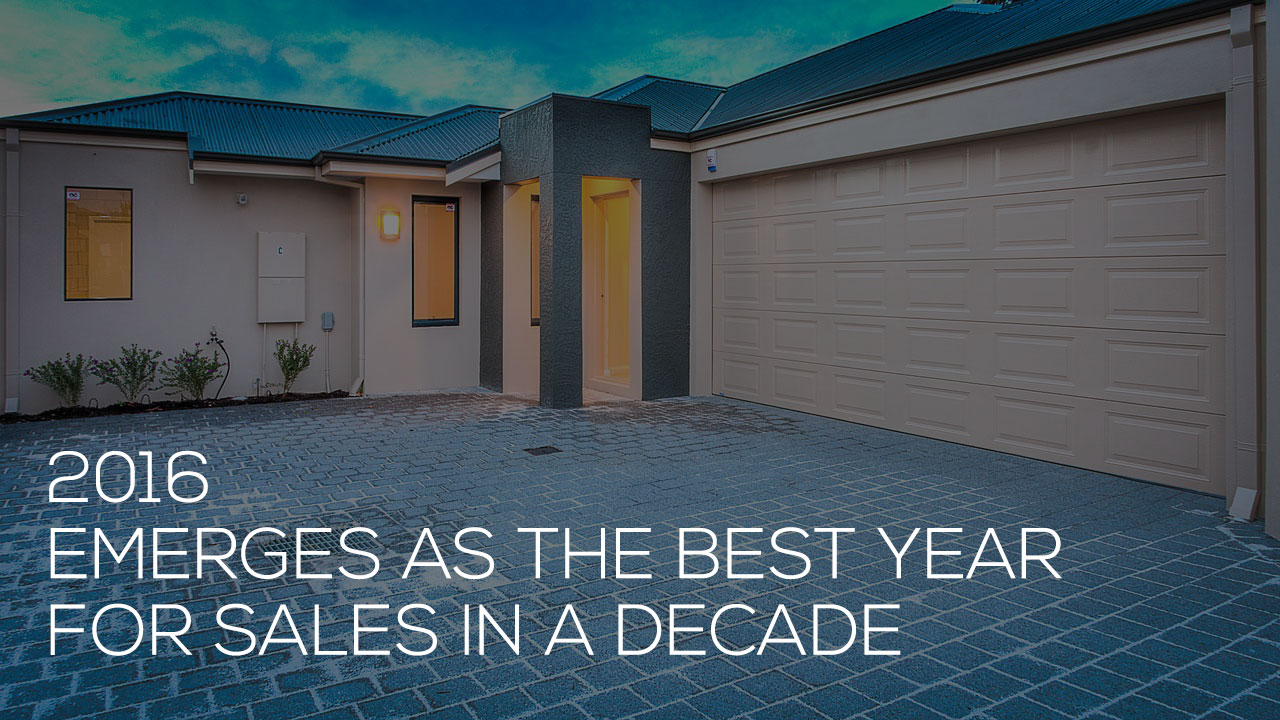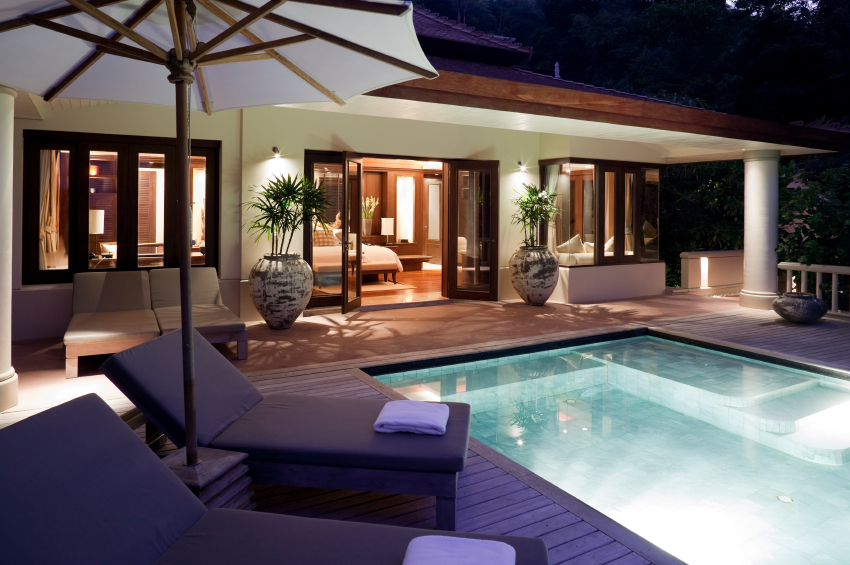Author: Igor Nastaskin
Ways to Find Healthy Neighborhoods
From green space to traffic volume, the neighborhood in which you live could contribute to your overall well-being. If you’re looking for a healthy place to call home, Trulia offers some considerations to make during your house hunt. Look for sidewalks and bike lanes Being able to walk or bike for exercise or to conduct daily errands is good for you. Plus, less traffic and air pollution also means a healthier planet. Even having access to public transportation can contribute to a healthy lifestyle, since there’s usually some walking to get to your bus stop or train station. Don’t underestimate a lush tree canopy Not only do trees often enhance property values, but they also can contribute to a healthy neighborhood. A cooler lot means your HVAC system doesn’t have to work as hard in the heat of summer. Those trees also can provide shade for your outdoor pursuits. But the best part just might be that greenery in general is good for you. Look for neighborhoods with greenways, community gardens and trails The more access you have to nature—and nature’s bounty—the healthier you’ll probably be. Check out the community’s parks and recreation website to see if there are local farmer’s markets, community fitness programs, greenway trail maps and dog parks. Observe neighborhood social connections and activity level Socializing with neighbors can lead to a sense of security and even happiness. Visit the neighborhood you’re considering at various times of day to see if people are out and about. Are neighbors chatting out front, jogging on neighborhood streets, or out walking their dogs or playing with the kids? All of these signs point to a thriving, active and close-knit community. Scout out parks, sports courts and play sites The healthiest neighborhoods offer variety and versatility when it comes to recreation and active living. In addition to nature exploration resources such as trails and greenways, look for neighborhoods that offer tennis or basketball courts, playgrounds, parks, fitness centers and pools. You may have to pay for these extra amenities through homeowner’s association (HOA) fees, membership requirements or higher home prices, but the ability to easily diversify your workouts can lead to greater health and fitness. Go to a neighborhood association meeting Mark your calendar for the next meeting of the neighborhood association or HOA in the areas you’re considering. In addition to meeting your potential neighbors, you could get an inside look at neighborhood concerns (such as safety issues or traffic congestion) and find out about future construction or plans for future healthy upgrades coming soon. Consider traffic volume Limited traffic, both in volume and speed, can contribute to a healthy neighborhood. But what makes high traffic unhealthy, exactly? Noise, for one. The more traffic there is and the faster cars travel, the noisier the environment, which can affect your sleep and stress levels. There’s also that pesky little pollution issue. Plus, longer commutes due to higher traffic volumes can decrease your overall quality of life. Check to see if healthy essentials are within walking distance Healthy neighborhoods have essential services nearby, such as day care centers, pharmacies, doctor offices, a hospital and urgent care. Easy access to affordable, nutritious food from supermarkets or farmer’s markets also is important—it’s even been associated with less obesity. And give your future new neighborhood bonus points if any of these essentials are within walking distance.
The 20 Hottest Markets for U.S. Real Estate in January 2017
While predictions call for a slight slowdown in the U.S. real estate market this year, Realtor.com still is forecasting that most of the nation’s hottest markets will keep blazing in 2017. And, according to the forecasts, the western U.S. will continue to lead the nation in prices and sales. “The top 10 markets all benefit from strong growth dynamics: population, jobs and households,” says Jonathan Smoke, Realtor.com’s chief economist, who analyzed the country’s 100 largest metro markets for their growth potential. “They all have low unemployment that’s heading lower, which buoys consumer confidence.” Western cities account for 11 of the top 25 metro markets on the company’s list, including five in California. But whatever their location, all of the top markets have in common relatively affordable rental prices, low unemployment, and large populations of millennials and baby boomers, along with a high number of listing views on Realtor.com. The top 10 are forecast to see average price gains of 5.8 percent and sales growth of 6.3 percent, exceeding this year’s anticipated national growth of 3.9 percent and 1.9 percent, respectively. And although the limited availability of homes for sale continues to be a problem for home buyers but a boon to homeowners, these markets are seeing growth in new construction that eases the supply shortage somewhat. Still, there isn’t enough new construction to keep up with the growth, Smoke says—and so prices continue to rise at above-average rates. However, compared with last year, price growth in eight of the top markets is expected to slow down, with only Los Angeles and Tucson, Ariz., showing bigger increases over last year. For all their commonalities, the top metro markets have different buying patterns and price levels, Smoke notes. Millennials are more of a buying force in Boston and Los Angeles, while retiring boomers make their presence felt in Phoenix; Jacksonville and Orlando, Fla.; Raleigh, N.C.; Tucson; and Portland, Ore. Veterans, meanwhile, come out in force in Jacksonville and Tucson. These were the top 20 performing markets in January: 1) San Francisco 2) San Jose, Calif. 3) Vallejo, Calif. 4) Dallas 5) San Diego 6) Sacramento, Calif. 7) Yuba City, Calif. 8) Denver 9) Stockton, Calif. 10) Fresno, Calif. 11) Oxnard, Calif. 12) Columbus, Ohio 13) Colorado Springs, Colo. 14) Nashville, Tenn. 15) Detroit 16) Modesto, Calif. 17) Los Angeles 18) Tampa, Fla. 19) Santa Rosa, Calif. 20) Fort Wayne, Ind.
2016 Emerges as the Best Year for Sales in a Decade
Existing-home sales finished out 2016 as the best year since the housing boom days. According to the National Association of Realtor’s December existing-home sales report, total existing-home sales—which are completed transactions that include single-family homes, townhomes, condos and co-ops—closed 2016 at 5.45 million sales, surpassing 2015 (5.25 million). This was the highest total for existing-home sales since 2006 (6.48 million). “Solid job creation throughout 2016 and exceptionally low mortgage rates translated into a good year for the housing market,” says Lawrence Yun, NAR’s chief economist. “However, higher mortgage rates and home prices combined with record low inventory levels stunted sales in much of the country in December. The final month of 2016 saw existing-home sales drop 2.8 percent to a seasonally adjusted annual rate of 5.49 million, NAR reported. Sales in December were only 0.7 percent higher than a year ago, with low housing supplies continuing to press on the market. “While a lack of listings and fast-rising home prices was a headwind all year, the surge in rates since early November ultimately caught some prospective buyers off guard and dimmed their appetite or ability to buy a home as 2016 came to an end,” says Yun. Here, some highlights from the December housing report: Home prices: The median existing-home price for all housing types in December was $232,200, up 4 percent from a year ago ($223,200). Days on the market: Thirty-seven percent of homes sold in December were on the market for less than a month. Properties, on average, stayed on the market for 52 days in December, up from 43 days in November but down from a year ago (58 days). Non-distressed homes took an average of 50 days to sell while short sales took the longest at a median of 97 days on the market in December. Foreclosures sold in 53 days, on average. Cash sales: All-cash sales comprised 21 percent of transactions in December, down from 24 percent a year ago. Individual investors made up the bulk of cash sales. They accounted for 15 percent of homes purchased in December, unchanged from a year ago. Distressed sales: Foreclosures and short sales ticked up to 7 percent in December, up from 6 percent in November. Still, distressed sales were down from 8 percent a year ago. Foreclosures made up 5 percent of sales in December, while short sales comprised 2 percent of sales. Foreclosures sold for an average discount of 20 percent below market value in December, while short sales were discounted 10 percent. Inventories: Total housing inventory at the end of December fell 10.8 percent to 1.65 million existing homes available for sale—the lowest level since NAR began tracking the supply of all housing types in 1999. Inventory now is 6.3 percent lower than a year ago. It is at a 3.6-month supply at the current sales pace.
Nine Creative Ways to Make Your Home Look More Expensive
Ready to sell your home, but worried that it might not show well? There’s no need to spend a lot to make your home look chic and expensive. From painting unattractive vinyl or wood flooring to replacing outdated light fixtures, Redfin offers these quick do-it-yourself upgrades that can help make your space look new and on trend. Paint the floor Make an old room look like it belongs in a beautiful new house by adding a fresh coat of paint to old unattractive flooring. Try using porch paint rather than regular wall paint, since porch paint is designed to handle foot traffic. You also might want to give the floor a unique look by using tape to create stripes, squares or diamonds. Redo outdated light fixtures You can find inexpensive lighting options online and at your local hardware store. To save money, go for simple, modern fixtures that won’t go out of style anytime soon and that will match many decor styles. If you can afford to splurge a little, a small but chic chandelier in the dining room or bedroom will add a pop of elegance. Add window dressings Even if your current blinds work just fine, hang window dressings anyway. Get stylish curtain rods and pretty curtains that match each room’s décor, and be sure to hang them uniformly. Dressings should extend about a foot above your window, and at least a few inches past each side. Some people hang their curtains right at the ceiling for a dramatic effect. Put up crown molding Crown molding hides the joints between your walls and ceilings, and can make your room look and feel more valuable from the outset. The subtle detail also looks beautiful above bland window frames, and can add an element of elegance to your window dressings. Try painting the crown molding a different color than the walls and the ceiling to make it stand out. Many go with white, but wood stain also looks gorgeous. Paint your white fridge metallic If you can’t buy new appliances, get some metallic paint at your local hardware store and paint your white refrigerator’s doors, handles and sides. You can choose paint that mimics stainless steel, or get creative and choose another metallic tint that matches your kitchen’s existing decor. Brightly colored refrigerators also are popular this year. Paint the garage to create a faux carriage door If your garage door needs a new coat of paint anyway, take this opportunity to spruce it up and give it a new color. You also might want to paint your garage door to look as if it has windows. Lay out rectangles with painter’s tape along the top of your garage door; cross them with tape to create a window-pane pattern; and then use shiny black paint to fill in the small rectangles. You can even add hardware as a finishing touch. Frame the television Find a large frame and simply place it on the wall around your TV. You also might want to consider framing some of your favorite artwork in thin frames that resemble your television’s existing plastic frame and then hanging that artwork around your television so that it looks like another part of the wall art. Cover old floors with laminate If you don’t have the budget for real hardwood floors, try laminate flooring as a temporary, much less expensive option. You can place the laminate on top of your old floor for a totally new look. Try your hand at wallpaper Wallpaper is an ideal way to add some personality to your walls and to make your home look more expensive.
The Millennial Path to Homeownership
Better Homes & Gardens magazine has released the findings from its ninth annual survey on attitude and behavior trends of U.S. homeowners. This year’s researched looked at millennial homeowners ages 22-39, with a special focus on millennial “firsts”—those living in their first homes that they’ve owned for five years or less. According to the survey, millennial firsts see homeownership as a good investment, with 85 percent viewing owning a home as an important part of their “American Dream.” However, millennials (especially millennial firsts) are extremely practical about homeownership. While they have aspirational dream homes, they have a realistic approach to their goals and budgets when it comes to home buying and renovating. “These first time millennial homeowners are focused on building equity—not debt,” says Jill Waage, Better Homes & Gardens’ editorial director of digital content and products. “They are strong believers in being able to afford their dreams as they achieve them and not over stretch themselves.” Here, some highlights from the survey: Millennial firsts are financially conscious and aim to accomplish home goals as they progress through life stages and become more financially stable. In fact, only 50 percent of firsts are willing to spend top dollar to get exactly the features and quality they want, while only 36 percent are willing to take out a loan to take advantage of a deal. Instead, firsts will make trade-offs, including waiting and doing do-it-yourself projects to get what they want when they can afford it. Firsts are more likely to live in lower-end homes that are aging and in need of repair. Fifty percent of firsts said at move-in their current home’s condition required some degree of repair or remodel—ranging from minimal to considerable. When it comes to home-improvement needs, only one-in-four firsts say their primary approach is to pick up the phone and pay someone, compared with 40 percent of total millennials. Three-in-four firsts do some degree of DIY in their home, while almost 90 percent of firsts are very or extremely interested in learning about home repair and improvement projects. The top interior DIY improvements for which millennial firsts indicated the greatest need for information include simple but stylish projects that add value to their home, including painting walls and installing tile and light fixtures. Millennial firsts have modest aspirations for their future homes. Their greatest desires are for practical living spaces—including renovated kitchens (64 percent), renovated bathrooms (60 percent) and deck/patio space (59 percent). On average, they would like mid-sized homes around 2,116 square feet.
The Most Expensive Suburbs of America’s 10 Biggest Cities
Residential real estate firm Engel & Völkers has taken a look at the most expensive areas surrounding America’s 10 largest cities. The goal: to provide a snapshot of the nation’s luxury real estate marketplace outside of the cities that typically top the list of the nation’s wealthiest places to live. After identifying the nation’s 10 most-populated cities using data from the U.S. Census bureau, the firm then determined the priciest suburbs based on median home price. Here, a list of the cities—in ascending order of population—and the most expensive suburb of each one, along with the median home price and household income. 10) San Jose, Calif.—Los Altos Hills Population: 1.03 million Median home price: $3.45 million Median household income: $224,270 9) Dallas, Texas—Westlake Population: 1.3 million Median home price: $2 million Median household income: $250,000 8) San Diego, Calif.—Rancho Santa Fe Population: 1.39 million Median home price: $2.12 million Median household income: $101,250 7) San Antonio, Texas—Terrell Hills Population: 1.47 million Median home price: $1.32 million Median household income: $127,589 6) Phoenix, Ariz. —Paradise Valley Population: 1.56 million Median home price: $1.1 million Median household income: $134,097 5) Philadelphia, Pa. —Bryn Mawr Population: 1.57 million Median home price: $760,300 Median household income: $61,797 4) Houston, Texas—Southside Place Population: 2.3 million Median home price: $1.25 million Median household income: $141,250 3) Chicago, Ill. —Glencoe Population: 2.72 million Median home price: $1.3 million Median household income: $171,250 2) Los Angeles, Calif. —Bel-Air Population: 3.97 million Median home price: $3.45 million Median household income: $207,938 1) New York, N.Y. —Bronxville Population: 8.55 million Median home price: $2.33 million Median household income: $193,333
Six Things You Need to Know Before Buying a Historic Home
The amount of work and money needed to maintain a historic home can differ, depending on the property’s condition. However, if you go in prepared, this labor of love can be much less challenging. Here, Redfin offers six factors to keep in mind before purchasing a piece of history. 1) Historic districts have their trade offs Living in a designated historic district might limit what you can do to the exterior of your home, including your choice of paint color and windows. Check with your local planning department to determine whether there are any restrictions. Districts that only are listed on the National Register of Historic Places don’t control what you can do to your home, but areas on a state or local registry could have regulations. 2) Historic preservation easements are binding Setting up a historic preservation easement will protect the integrity of your home in perpetuity. You pay a qualified preservation organization or government agency to hold the easement, a legal tool that places restrictions on what can happen to the property and requires future owners to adhere to them. Your payment for an easement might qualify for a federal tax deduction. Before purchasing a historic home, the National Trust for Historic Preservation recommends that you find out if an easement is already in place, and if so, what it entails and who holds it. 3) Maintaining a historic home’s integrity can get pricey There’s a reason historic homes last: They tend to be structurally sound. But if your home happens to need extensive repairs, the costs can add up. Make sure you have a steady income and a substantial amount of cash in savings. You don’t want to be caught off guard by repair or replacement costs. Also keep in mind that some state historic preservation offices offer grants or tax programs for homeowners. 4) Getting financing and insurance can be difficult There are many methods of financing your historic home purchase, even if you’re a first-time homebuyer. However, some lenders might hesitate if the home needs extensive repairs. Although you might not be able to use a traditional loan backed by the U.S. Department of Housing and Urban Development, for example, a private HUD Title 1 loan can go toward smaller repairs. And a loan called a 203(k)—also known as rehab mortgage insurance—can go toward the purchase and rehab cost. You could also take out a Fannie Mae HomeStyle Renovation mortgage for the same purpose. Insurance companies may show reluctance to sell you a policy based on the assumption that replacement costs are higher for designated historic homes. But this isn’t always the case, particularly if your home is only federally registered and therefore free of restrictions. You may have to spend some extra time shopping around for homeowners insurance. 5) Old homes can come with old problems Although lenders usually don’t require a home inspection, getting one is a good idea before making a commitment on any home. As a good rule of thumb, try to find an inspector who has experience dealing with historic homes and the issues they present, such as the possible presence of lead paint or asbestos. 6) Your modern-day wishes may not fit Imposing your desire for a fully equipped kitchen or a master bathroom onto historic architecture may be a challenge. They could devalue your home if they already exist and were added without the integrity of the historic value in mind, or if you plan on making additions without being careful. Ask yourself: What are your goals in purchasing a historic home? What can you live without? How important is the home’s original character to you, and how will changes to that character affect the sale price?
Can Relationship Status Affect your Mortgage-Worthiness?
Whether you’re single, married, divorced or somewhere in between, your relationship status can have a direct impact on your ability to obtain a mortgage. It’s not that a specific relationship status decides whether you will get a mortgage, but that status can influence the financial factors a lender looks at to determine whether you are approved for a home loan. Here, Trulia.com offers seven ways your relationship status can influence your financial facts—and how that, in turn, might affect your mortgage-worthiness. 1. You’re single A single person doesn’t maintain a double-income household, which typically results in a lower total household income. So, unless your income is high enough and you’ve already reduced all of your other debts on your own, you may not get approved for the loan you want. An option for single borrowers is to get a co-signer. That makes you less of a risk to the financial institution lending you the money, since the agreement states someone else will make mortgage payments if you fail to do so. You’re in a committed relationship Lenders don’t frown upon legally single individuals who are taking out a mortgage together. Applying jointly means you get to combine your incomes, but the lender still will look at the lowest credit score on the application. You’re married Getting a mortgage while you’re married may make the process a little easier—and help you qualify for more favorable loan terms—if you both work and have income. It also helps improve your debt-to-income ratio if you can add up two incomes and either have little debt between you or just one spouse carrying a manageable debt load. You’re married…but your spouse has bad credit When you apply for a loan as a couple, the lender uses the lower of the two credit scores. If your spouse has bad credit, you might not be able to qualify for the loan you want. You may need to look at purchasing a less expensive home or saving up a bigger down payment so you can finance less of the property. Or you may have to accept a mortgage with a higher interest rate and higher monthly payments. You’re separated Californians should be aware of state laws, which say community property is everything you own together. There are a few exceptions, including property you purchase before you’re married or after you are legally separated. Most community property needs to be sold if you split up, unless both parties can agree on how to distribute everything. Reaching an agreement here may prove challenging unless the split is uncontested by either side. You’re divorced Splitting up jointly held property can damage both of the ex-spouses’ credit scores. So, it’s important to work with your attorneys and possibly a financial adviser to create a strategy to avoid this. That may include living under the same roof for a time until a property can be sold. You probably also need to sell your old marital home before moving on since it’s difficult for many borrowers to take out a second mortgage while still paying down the first. You’re recently widowed Lenders want to know what your income will look like in the future, including actual Social Security payments or death benefits—not what you’re qualified to receive. Lenders generally want to see that these benefits will continue for at least three years. Otherwise, they won’t be used as qualified income.








